
July 29, 2025
Recent Articles
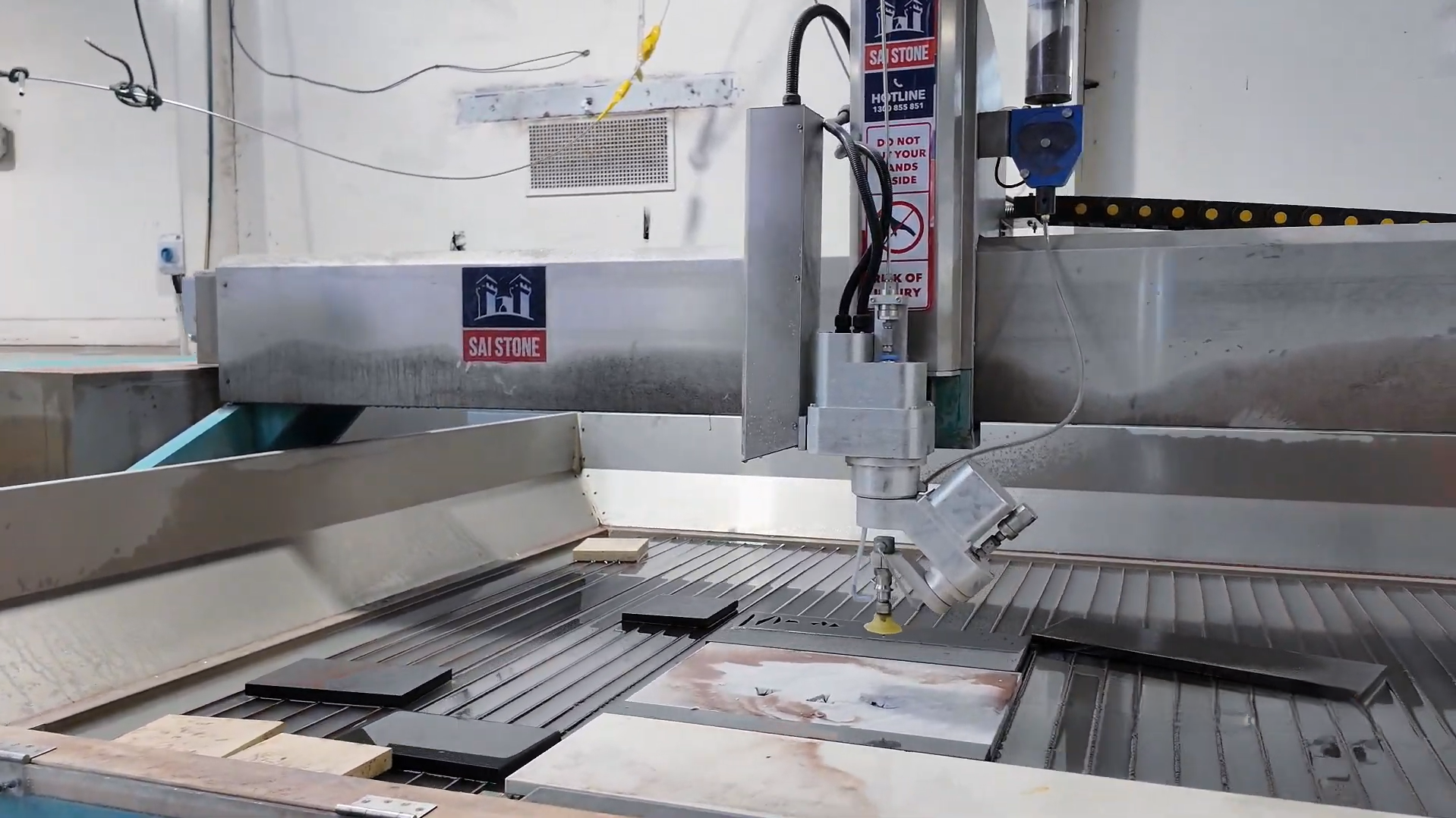
The Art of Precision: Waterjet Cutting Technology Advantages
Waterjet cutting is transforming modern stone landscaping with unmatched precision, versatility, and sustainability. From intricate designs to reduced material waste, this technology empowers architects, landscapers, and developers to bring creative visions to life without compromise.

5 Reasons Waterjet Cutting Is Changing the Game
Discover 5 powerful reasons why waterjet cutting is transforming stone design in Australia. From unmatched precision to eco-friendly efficiency, learn how this cutting-edge technology is shaping the future of landscaping and architecture.
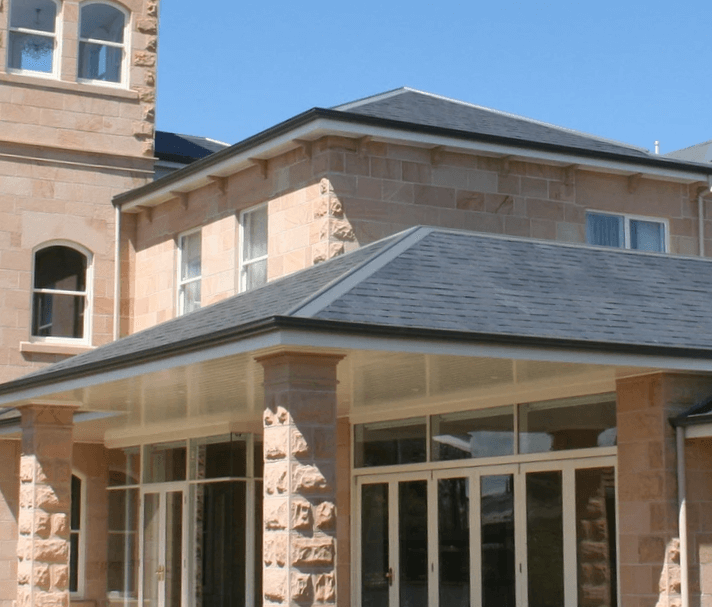
The Future of Natural Stone Landscaping in Australia: Key Trends You Need to Know in 2025
Explore the top natural stone landscaping trends shaping Australia in 2025. From sustainable sourcing and minimalist design to earthy tones and waterjet precision, this guide covers the latest materials and innovations.
In the world of interior and exterior design, natural stone continues to make a bold statement as they take the center stage in 2025’s landscaping projects. Across Australia, architects, builders, and homeowners are embracing trends that mix classic stone with modern design and technology.
In this report, we will highlight the top trends that continue to shape the use of natural stone for the rest of the year. At SAI Stone, we’re excited to share our expertise and help you build for your commercial or residential projects so your natural stone can stay ahead of the curve.
Natural Stone Trends This 2025
Embracing Sustainable Natural Stone Practices
Sustainable materials are everywhere—from skincare to furniture, and even in landscaping. Today, they’re not optional; they’re essential in natural stone design. In fact, over 70% of homeowners in Melbourne are now prioritizing sustainable practices in their outdoor spaces.
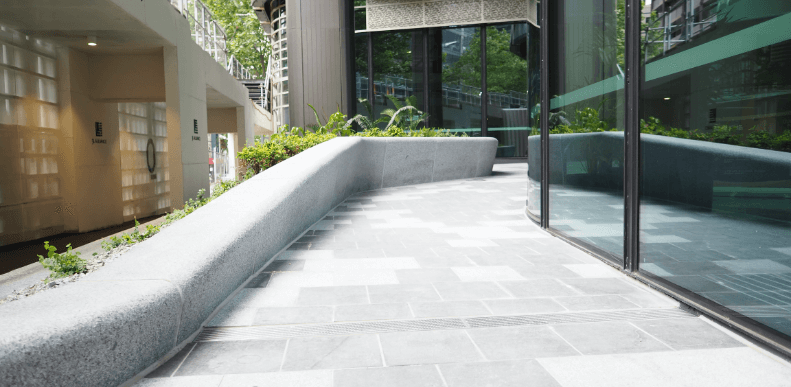
As a result, architects, commercial developers, and designers, are more environmentally aware than ever as they make a strong move on choosing durable, locally sourced stone, to cut down on transportation emissions and support local economies, making projects greener and more responsible.
Unlike manufactured products, the key to finding the best natural stone is it requires no chemical processing and they can often be obtained from regional quarries, greatly reducing the carbon footprint associated with transportation.
Additionally, many Australian designers are embracing reclaimed and recycled stone, recognizing that repurposing materials from other or past projects cuts down on emissions and waste, emphasizing the minimization of environmental impact, and keeps valuable resources out of landfills.
Natural stone stands out for its durability. Its lifespan helps reduce waste and conserve resources over time. For consumers and builders, it’s the best choice since they won’t be much of an addition to the annual budget. It is also far less energy-intensive that is simply quarried and cut, making it an eco-friendly choice with minimal factory processing, a step to a more sustainable building practices.
Minimalists Designs with Clean Lines and Stone Simplicity
Minimalism remains influential, with large-format slabs taking the lead to create seamless, expansive surfaces that visually open up spaces, which beautifully fits into a minimalistic scheme. In parallel with sustainability, minimalist design embraces the philosophy of “less is more,” focusing on simplicity, clean lines, and functionality.
The idea is to reduce clutter and ornamentation so that every element in an outdoor space serves a purpose and contributes to a calm, orderly aesthetic. This trend is evident in Australian backyards and public plazas alike. You can think of sleek stone patios, orderly geometric pathways, and open areas punctuated by a few striking features rather than a mishmash of materials.
Designers often choose one primary stone type and finish for a given space to create a unified look. “Minimalist landscape design focuses on simplicity, clean lines, and spaciousness,” explains landscape designer John French, noting that neutral tones and sleek hardscaping can “blend beauty with functionality” in a modern, low-maintenance outdoor space.
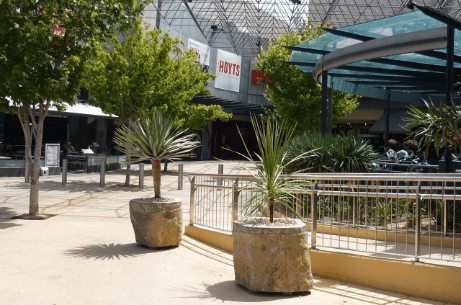
By using fewer materials lets the stone’s natural color and texture shine, creating interest without extra decorationLarge stone pavers or tiles with straight edges create a sense of order and direction, while open negative space such as gravel beds or lawn between stepping stones gives the design room to “breathe” and makes the area feel larger than it is.
Several key elements characterize this minimalist stone trend:
-
- 1. Geometric Layouts: We see a lot of straight-edged pathways and grid or linear patterns in paving. Clean geometric layouts using stone slabs give a contemporary, uncluttered look. Even when curves are used, they are gentle and deliberate, often to create flow without unnecessary complexity.
- 2. Limited Material Palette: Rather than mixing five different paver styles, minimalist designs might use one type of stone in two finishes like a textured for walking surfaces and polished for wall caps for subtle contrast, this restraint creates a cohesive and elegant feel.
- 3. Functional Design: Every stone element is chosen for both form and function. A simple stone bench doubling as a sculpture or a retaining wall that also serves as seating are common features. Nothing is superfluous, if a boulder is placed in a garden, it may also act as a natural sculpture or to anchor the space visually.
One big reason for the rise of minimalist stone landscaping is its practicality. These designs tend to be low-maintenance, which appeals to busy homeowners and facility managers. Fewer plants and simpler layouts means less maintenance, and durable stone surfaces mean less frequent repairs.
In fact, minimalist gardens can require 30–50% less maintenance and up to 50% less water usage than more elaborate gardens and it’s no surprise that a large portion of homeowners are now seeking sleek and sustainable designs.
The Nuetral Palette of 2025
When it comes to color and style, 2025’s mantra is “keep it neutral.” Neutral tones inspired by nature dominate the color story of 2025. Think of gentle beiges, warm greys, sandy taupes, and creamy off-whites. These tones create a timeless backdrop that complements any greenery or architectural style, rather than competing with it, for both indoor and outdoor landscapes.
In landscaping, this translates to using stone like travertine, limestone, light granites, and even certain marbles that naturally come in these subdued shades. For instance, buff-colored limestone pavers or ivory travertine tiles can instantly brighten a space without overpowering it, instead it creates a calm and expansive feel.
Natural stone inherently offers a rich palette of neutral colors. Many Australian projects often celebrate indigenous stones as they are known for their distinctive yet subtle hues. Sandstone, with its sandy beige to golden cream tones, remains a favorite for its classic, sunlit look like Sydney’s historic buildings owe their charm to local sandstones. Meanwhile, bluestone, which is widely used in Melbourne, comes in cool blue-grey shades that perfectly complement modern minimalist schemes and lush green foliage.
As designers are increasingly turning to native stones such as sandstone, bluestone, and limestone, precisely because these local materials bring timeless elegance with their neutral colors and natural variation. Rather than painting a patio or using artificial colored pavers, choosing a native stone ensures the color will remain stable and age gracefully, acquiring even more character over time.
Beyond single colors, the textures and patterns of natural stone add depth to the neutral palette. A slab of travertine, for example, might have delicate bands of beige and ivory running through it, each piece uniquely beautiful. A piece of marble might show subtle grey veining on a white background.
The best thing about natural stone is the neutrality it brings, as it is highly versatile and timeless, especially if you want your design tastes to change years down the line. A neutral stone foundation is easy to work with; it's like having a blank canvas that can accommodate new accent colors or styles.
This is evident across Australia as new commercial plazas might use vast stretches of light granite paving for a clean, cohesive look, while luxury homes incorporate mellow-hued stone cladding to blend with natural surroundings.
In summary, the neutral color trend in natural stone landscaping is about embracing earthy elegance. By favoring stones with whites, greys, and beige tones, 2025 designs achieve a modern yet timeless character. These colors make spaces feel larger, lighter, and closer to nature–all qualities that today’s architects and owners value.
Earthy Tones and Natural Hues: Calm, Connection, and Character
Neutral tones can still be rich and full of character. Minimalist design doesn’t have to be boring. This 2025, neutrals come with depth, earthy tones like golden sand beige, soft cloud grey, terracotta, and mossy greens bring warmth, calm, and sophistication to modern landscapes.
It’s no coincidence when you see a wellness garden or meditation corner that they incorporate features like pale stone gravel or sand and grey-toned rock arrangements, because they set a soothing mood. These color choices align with the wellness and biophilic design movements, as they foster a sense of peace and connection to the earth, making outdoor areas into relaxing retreats.
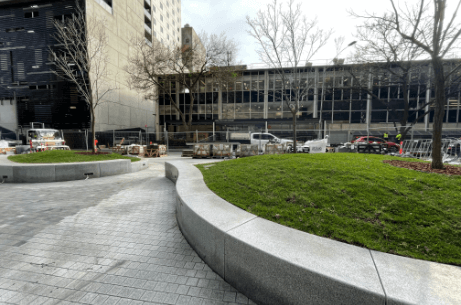
Designers are taking cues straight from nature since it brings out calmness, joy, and peace. They also pair it with native plants, timber furniture, and minimal landscaping, whether it's incorporated in a path or a garden wall, these materials bring out authenticity.
As a matter of fact, there’s also the emotional impact that earth tones bring, as they bring comfort, tranquility, and stability. These color palettes of earthy tones have a connection to nature, and it translates and can also improve your well-being when you walk into them.
The best thing about earthy tones is they connect with the sustainability movement because the world supports an ethos of environmental conservation, aligning with greener living practices and eco-friendly design solutions.
Overall, earth tones do not only reflect current trends, but they help shape them. Minimalism and earth tones isn’t about being plain, it’s about letting high-quality materials like stone speak for themselves in the design. Earth tones underscore a collective yearning for grounding and harmony with nature amidst our rapidly changing lifestyles.
Bold Stone Statement and Features
While minimalist surfaces reign in 2025, there's still plenty of space for bold stone features that act as showstoppers and these are what most designers and builders want for their project. They favor a dramatic veining and high-contrast natural patterns to create statement moments without overpowering a calm, curated aesthetic.
You can also expect these bold stones used in floor-to-ceiling stone feature walls indoors and even dramatic marble veining on oversized kitchen islands and freestanding stone basins and bathtubs, as these pieces act as the focal points in the interior.
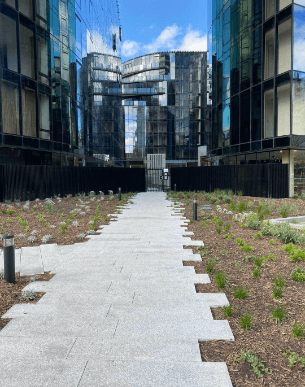
Meanwhile, on the exterior, natural stone helps a space become bold and brings out its luxurious feel to its patios, terraces, and pool areas. However, be careful, your stone must be durable and weather-resistant to withstand both the built environment and nature.
Technology and Customization
The beauty of natural stone also lies in the technology used to shape it. From sustainability to making bold statements, much of its potential comes from water-efficient cutting techniques like waterjet technology, which reduces material waste and conserves resources during fabrication.
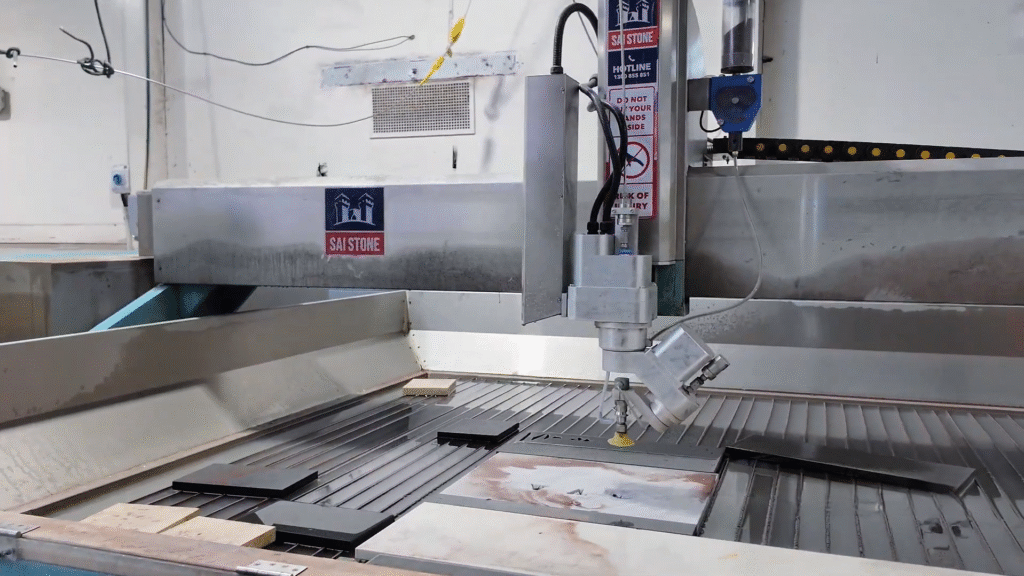
At the forefront of this tech revolution is waterjet cutting, along with CNC routing, laser measurements, and 3D scanning.Together, these technologies allow for hyper-precise customization, enabling intricate patterns, curves, and mosaics that traditional methods couldn’t achieve.
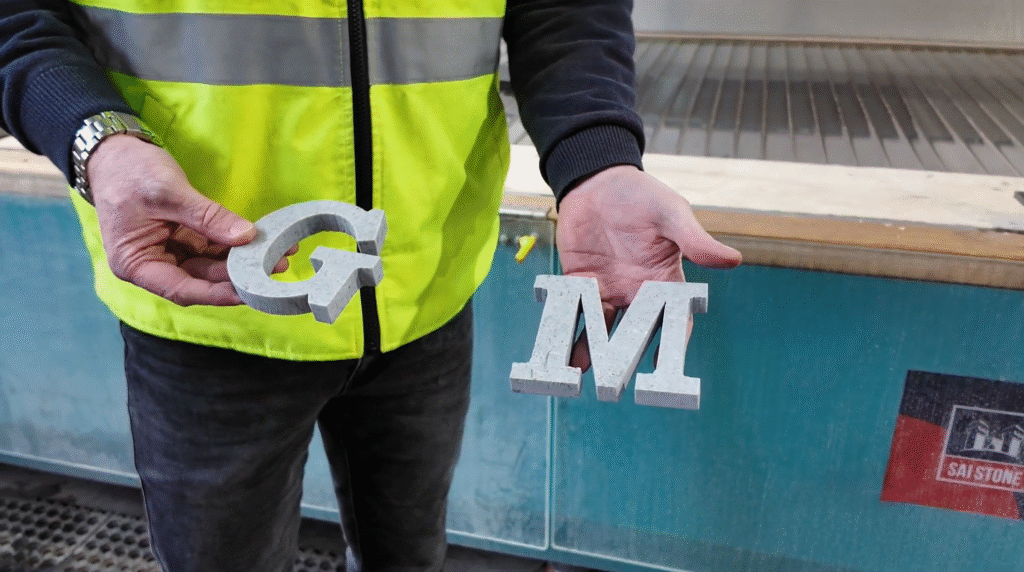
The advances in technology are transforming how natural stone is processed and installed. What was once difficult or impossible is now achievable, as waterjet technology empowers designers to push boundaries, experimenting with shapes and textures while significantly minimizing offcuts and errors. Additionally, the cold-cutting process uses water instead of heat, preserving the stone’s natural properties without thermal damage.
As a result of this technology, customization is becoming the norm. Waterjet cutting is so accurate that it reduces the number of mistakes and re-cuts needed, saving both stone and the energy required for processing, making these stones now tailored to fit unique architectural designs and personal tastes with remarkable precision.
By integrating this technology, fabricators ensure clean edges with minimal waste, perfect for bespoke projects, pool copings, and specialty inlays. The best thing about waterjet technology is that it supports eco-friendly practices without compromising designs freedom and flexibility.
The Future is Natural Stone
One thing is for certain: natural stone is here to stay and will remain relevant for years to come. It is not a trend that will pass, but a message passed on from generation to generation, all thanks to its durability.
As a matter of fact, this 2025 we have also seen a push for safer, more sustainable building materials at the policy level, in Australia's decision to ban the use, supply and manufacture of engineered stone that is in effect since July 1 2024 for health reasons.
Australia led the way in sustainability by becoming the first country to ban engineered stone. The government aims to protect the lives and safety of Australians working on the product that are critical to the industry workers, as they have been diagnosed with silica dust related conditions.
As a result of these actions, natural stone remains a staple, not only in homes but also in commercial designs,that will continue to evolve over the years. But for now, these are the current trends you should notice and consider when choosing natural stone this 2025.
Bring Your Natural Stone Vision to Life with SAI Stone
At the forefront of all these trends is SAI Stone, exemplifying how an expert supplier can drive trends and support visionary outcomes. By offering sustainably sourced materials, embracing design collaboration, and investing in modern fabrication techniques, SAI Stone has positioned itself as the go-to partner for those looking to implement 2025’s top landscaping trends.
One of SAI Stone’s standout contributions to major eco-conscious projects includes civic works like Sydney’s Castle Hill Station and the Royal Adelaide Hospital, which demonstrate how natural stone is being used at scale to create long-lasting, sustainable public spaces.
Additionally, their "Stone for Projects" approach reflects a commitment to providing enduring natural materials for everything from small gardens to large urban developments.
Whether you’re a council developing a public plaza or a homeowner designing a backyard oasis, having an industry leader and a stone expert who can deliver on the promise of quality natural stone from cut and finished exactly to spec is invaluable. Across Australia, construction companies, architects, fabricators, and developers are leveraging this partnership to ensure their projects are not just on-trend, but built to last.
At SAI Stone, we continuously track and anticipate industry trends to bring you the finest selection of premium natural stones that marry style with craftsmanship and innovation. Explore our exclusive range designed of stones to elevate your next project visually and sustainably.
Contact us today to explore how these trends can elevate your next project!



